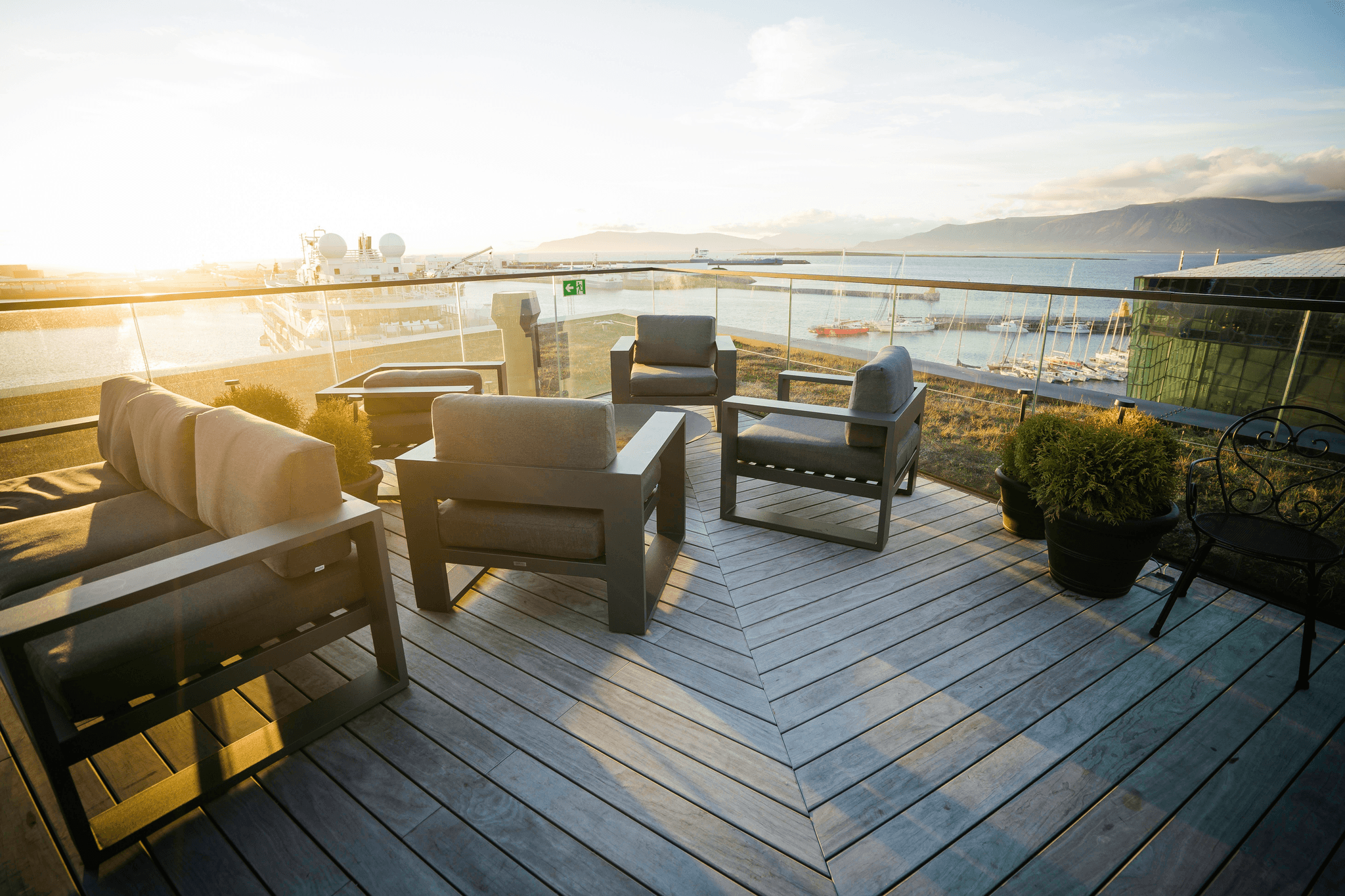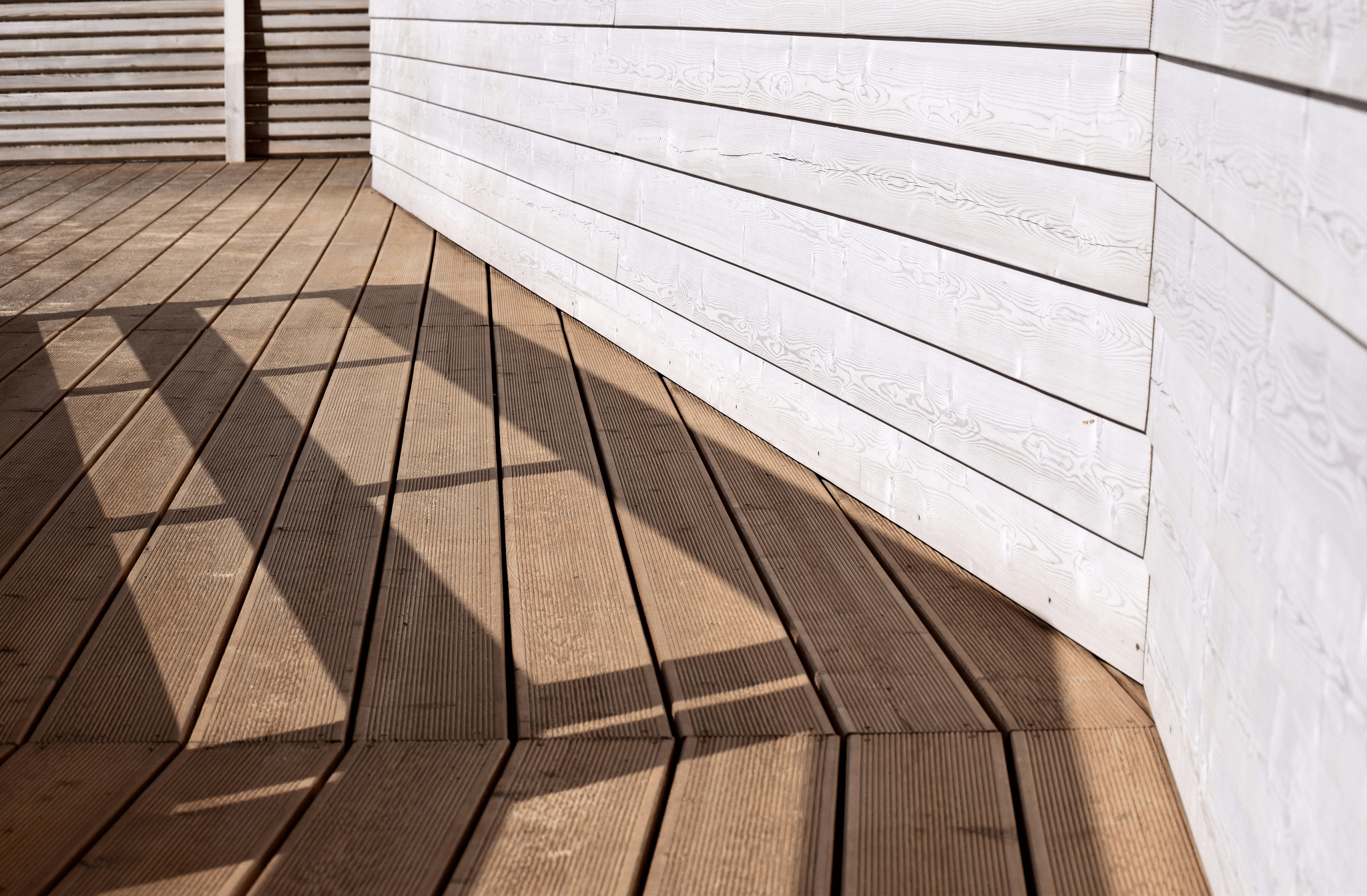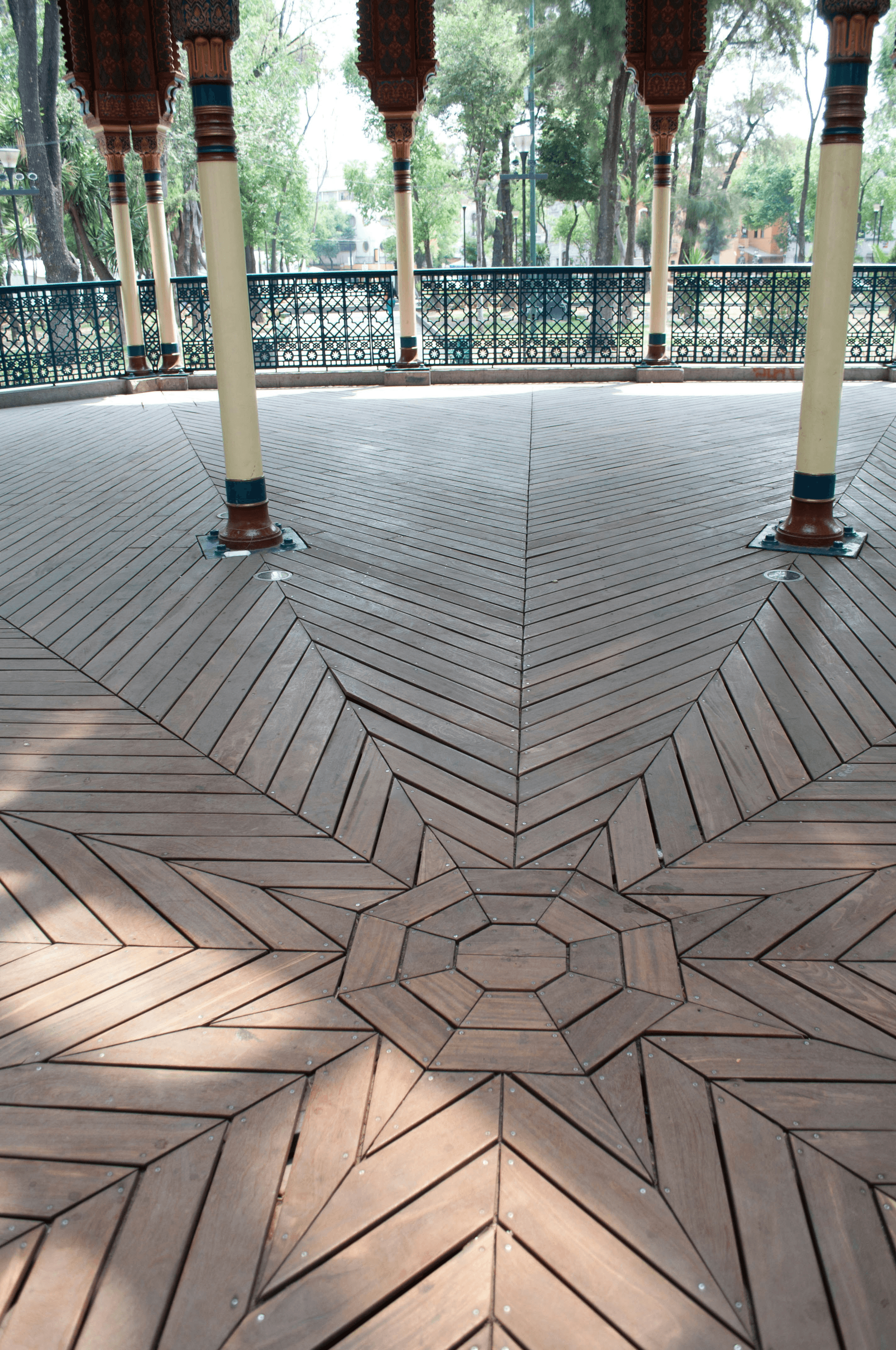Introduction

Understanding Composite Floor Decking
Composite floor decking is a modern solution designed to provide an attractive alternative to traditional wood decking. Made from a blend of recycled wood fibers and plastic, these composite deck boards offer superior resistance to moisture, rot, and insects—issues that often plague conventional wooden decks. This unique composition not only enhances durability but also ensures low maintenance over the years, making it an ideal choice for busy homeowners.
The Rise of Composite Decking Systems
In recent years, there has been a noticeable shift towards composite decking in the construction industry as more people seek sustainable and long-lasting materials for their outdoor spaces. As awareness grows about environmental concerns, many brands have begun producing eco-friendly options using recycled materials in their composite wood decking boards. The increasing popularity of these versatile decking systems reflects not just consumer preference but also advancements in technology that enhance performance and design flexibility.
Benefits of Using Composite Decking
The advantages of using composite decking are numerous and compelling for anyone considering new outdoor installations. First off, low maintenance is a game changer; unlike traditional wood decks that require regular staining or sealing, composite floor decking simply needs occasional cleaning with soap and water to keep it looking fresh. Additionally, with various styles available through deck calculators offered by manufacturers, you can customize your space without sacrificing durability or aesthetic appeal—truly a win-win situation!
What is Composite Floor Decking?

Composite floor decking has become a popular choice in modern construction due to its unique blend of materials and functionality. This innovative decking material combines wood fibers and plastic, creating a durable, stable surface that stands up to the elements. Understanding what composite floor decking is can help you appreciate why it’s gaining traction in both residential and commercial projects.
Definition and Composition
At its core, composite floor decking is a man-made product designed to mimic the appearance of traditional wood while providing enhanced durability. Typically composed of recycled wood fibers mixed with high-density polyethylene (HDPE) or polyvinyl chloride (PVC), this decking material offers resistance to moisture, fading, and insects. The result? Composite deck boards that are not only visually appealing but also engineered for longevity.
The composition of composite wood decking boards varies by manufacturer, with some opting for more sustainable materials than others. This variation allows homeowners and builders to select products that align with their environmental values while ensuring they receive quality performance from their decking systems. Ultimately, the right choice in composite decking can lead to stunning outdoor spaces without compromising on durability or aesthetics.
Types of Composite Decking
Uncapped composites provide a more budget-friendly option but may require more maintenance over time due to their susceptibility to fading and wear. On the other hand, PVC composites offer superior water resistance and are often used in environments where traditional wood would succumb to rot or decay quickly—perfect for waterfront properties or poolside decks!
With such variety among deck composite decking options, it's essential for builders and homeowners alike to weigh their choices carefully based on their specific needs.
Common Uses in Construction
Composite floor decking has found its niche in various construction applications thanks to its remarkable versatility. From residential patios and balconies to commercial boardwalks and public parks, this innovative material serves as an excellent alternative to traditional wooden structures across different settings. Its durability makes it particularly well-suited for high-traffic areas where wear-and-tear can quickly diminish other types of materials.
Moreover, many builders utilize composite deck boards when constructing multi-family housing units due to their low maintenance requirements—saving both time and money over the lifespan of the structure! As sustainability becomes increasingly important in construction practices worldwide, using eco-friendly options within composite wood decking boards further enhances its appeal among environmentally conscious developers.
In summary, whether you're designing a cozy backyard retreat or planning extensive commercial developments, incorporating composite floor decking into your project can yield impressive results while meeting modern demands for style and sustainability.
How Does Composite Floor Decking Work?

Composite floor decking is not just a pretty face; it’s engineered for superior performance. At its core, composite decking systems combine wood fibers and recycled plastic, creating a robust material that can withstand the elements while looking great. This unique composition allows for versatility in design and application, making it a popular choice among builders and homeowners alike.
Structural Mechanics Behind Decking Systems
Understanding the structural mechanics behind decking systems is crucial for anyone considering composite floor decking. The combination of materials in composite deck boards provides strength without the weight of traditional wood, allowing for longer spans between supports. This means you can enjoy an open space without the clutter of excessive support beams—perfect for those expansive outdoor areas.
Stability and Load Capacity
When it comes to stability, composite wood decking boards shine brightly compared to their traditional counterparts. These materials are designed to resist warping, splintering, and decay over time, ensuring your deck remains safe and attractive under heavy loads. With impressive load capacity ratings, composite decking can handle everything from family gatherings to heavy patio furniture with ease—no need to fret about those summer BBQs!
Comparison with Traditional Decking Material
Comparing composite deck boards with traditional decking material reveals some stark differences that can influence your decision-making process. While wood may offer initial charm and a lower upfront cost, it requires ongoing maintenance like staining or sealing that can add up over time. In contrast, composite flooring not only offers greater durability but also minimizes upkeep—saving both time and money in the long run.
Benefits of Using Composite Decking

Composite floor decking has surged in popularity for various reasons, and its benefits are hard to overlook. From low maintenance requirements to eco-friendly options, composite decking systems provide a multitude of advantages that traditional materials simply cannot match. Let’s dive into the specific perks that make composite deck boards a top choice for homeowners and builders alike.
Low Maintenance and Durability
One of the standout features of composite decking is its remarkably low maintenance needs. Unlike traditional wood decking, which requires regular staining, sealing, and painting, composite wood decking boards are designed to withstand the elements with minimal upkeep. This durability means you can enjoy your outdoor space without worrying about constant repairs or replacements—just an occasional wash with soap and water will do!
Additionally, composite floor decking is resistant to fading, splintering, and warping over time, making it a reliable choice for any climate. Because it’s engineered from a blend of recycled materials and plastic fibers, these deck composite decking options resist moisture damage better than their wooden counterparts. Therefore, investing in quality composite deck boards means investing in longevity.
Eco-Friendly Options Available
For environmentally-conscious consumers, choosing composite decking material offers an appealing solution. Many brands produce eco-friendly options made from recycled materials—think reclaimed wood fibers mixed with plastic waste—that help reduce landfill contributions while providing a beautiful outdoor surface. This sustainable approach not only helps protect natural resources but also allows you to enjoy your space guilt-free.
Furthermore, many manufacturers prioritize sustainable practices throughout their production processes by minimizing waste and using renewable energy sources. So when you opt for composite wood decking boards over traditional lumber, you're not just improving your home; you're also contributing positively to the planet's health! It’s a win-win situation that makes choosing the right decking systems even more rewarding.
Aesthetic Appeal and Design Flexibility
Whether you prefer a rich mahogany hue or a sleek modern gray finish, there's likely an option that fits your vision perfectly among the diverse selection available on the market today. This versatility allows homeowners to express their unique styles while enhancing property value.
Moreover, many brands offer customizable solutions through various patterns and designs that elevate your outdoor space beyond simple planks—think intricate railings or multi-level layouts! The ability to mix different styles gives homeowners creative freedom when planning their projects using a handy deck calculator for precise measurements. In short: if you're looking for beauty combined with functionality in your outdoor areas, look no further than these stunning composite deck boards!
Choosing the Right Composite Decking

Selecting the right composite decking can feel like navigating a maze, but it doesn't have to be overwhelming. With an array of options available, understanding your specific needs and preferences is crucial. By considering factors such as durability, aesthetics, and maintenance requirements, you can find the perfect composite floor decking solution for your space.
Factors to Consider When Selecting
When choosing composite deck boards, several key factors come into play. First and foremost is the climate in your area; different decking materials perform variably under various weather conditions. Additionally, consider the color and texture that will best complement your outdoor space; after all, aesthetic appeal plays a significant role in enhancing your home's exterior.
Another important aspect is maintenance—some composite wood decking boards require more upkeep than others. Look for products that offer low-maintenance solutions while still providing durability against wear and tear. Lastly, always factor in budget constraints; there's a wide range of pricing within composite decking systems that can fit any financial plan.
Popular Brands and Products
The market for composite decking is rich with reputable brands offering high-quality products designed to meet diverse needs. Trex is often at the forefront of discussions about composite floor decking due to its extensive range of eco-friendly options and innovative designs. Other notable brands include TimberTech and Fiberon, both known for their stylish aesthetics and robust performance.
For those seeking affordability without sacrificing quality, brands like NewTechWood provide excellent value with their composite deck boards that mimic natural wood beautifully. It's essential to read reviews and compare features across different brands so you can make an informed decision tailored to your preferences. Each brand has its unique selling points—finding one that resonates with you will elevate your outdoor experience.
Utilizing a Deck Calculator
Before diving into installation or purchasing decisions, take advantage of a deck calculator to ensure you've got precise measurements for your project. This handy tool helps estimate how much material you'll need based on the size of your space while accounting for waste during installation—because nobody wants leftover pieces lying around!
Using a deck calculator also allows you to explore different configurations or layouts with ease, giving you a clearer vision of how various styles of composite decking might look in real life. Plus, it saves time by eliminating guesswork when determining quantities needed for those stunning new deck boards you've been eyeing!
Installation Process for Composite Decking

Installing composite floor decking not only enhances the aesthetics of your outdoor space but also ensures a durable and low-maintenance solution. With a little preparation and knowledge, you can tackle the installation process like a pro. Let’s dive into how to get your deck composite decking project off the ground!
Preparing the Site for Deck Installation
Before laying down those beautiful composite deck boards, preparation is key to ensuring a successful installation. First, clear the area of any debris, vegetation, or old decking material that may interfere with your new decking systems. Next, use a level to check the ground; it should be even to provide proper support for your composite wood decking boards.
Once you've cleared and leveled the site, it's time to plan out your layout using a deck calculator. This handy tool helps you determine how many composite floor decking boards you'll need while factoring in waste and cutting allowances. Lastly, consider installing a weed barrier fabric beneath your deck; this will help minimize maintenance later on by preventing unwanted plant growth.
Step-by-Step Installation Guide
Now that you're all set up, let’s get into the nitty-gritty of installing your composite decking! Start by laying down beams or joists according to manufacturer specifications—these are crucial for supporting your composite deck boards securely. Ensure that these structural components are spaced appropriately; typically 16 inches apart is standard for most decking material.
Next up is fastening those gorgeous composite wood decking boards onto the joists using hidden fasteners or screws designed specifically for this purpose. Make sure to leave adequate spacing between each board as recommended by the manufacturer—this allows for expansion and contraction due to weather changes. Once all boards are in place, finish up by adding any necessary trim pieces or railings.
Common Mistakes to Avoid
Even seasoned DIYers can stumble during installation if they're not careful! One common mistake is neglecting proper spacing between deck boards; too little space can lead to warping or buckling over time in varying weather conditions—definitely not what you want from your composite floor decking! Always follow manufacturer guidelines regarding spacing and fastening.
Another pitfall is underestimating the importance of a solid foundation; without adequate support from joists or beams, even high-quality composite decking will fail prematurely. Be sure you're following local building codes and regulations when planning out your structure as well! Lastly, don’t skip on using quality tools—investing in good equipment will save you time and frustration during installation.
Conclusion

Composite floor decking has revolutionized the way we think about outdoor spaces and structural applications. With its unique blend of materials, composite decking offers a durable, low-maintenance alternative to traditional wood options. As we've explored, the benefits of composite decking systems extend far beyond aesthetics, making them a smart choice for any construction project.
Recap of Composite Floor Decking
In summary, composite floor decking is an innovative solution that combines the best features of wood and plastic to create an exceptional decking material. The variety of composite deck boards available allows homeowners and builders to choose styles that fit their specific needs while ensuring longevity and performance. By understanding the composition and functionality of these materials, you can appreciate why they have become increasingly popular in both residential and commercial construction.
Future of Composite Decking Industry
Looking ahead, the future of the composite decking industry appears bright as manufacturers continue to innovate with eco-friendly materials and advanced technologies. As consumers become more environmentally conscious, the demand for sustainable options like composite wood decking boards is expected to rise significantly. Additionally, advancements in manufacturing processes will likely lead to even more durable products that can withstand various weather conditions while maintaining their aesthetic appeal.
Making the Right Choice for Your Space
Utilizing a deck calculator can help you determine how much material you'll need based on your design preferences and layout requirements—making it easier than ever to plan your project efficiently! Ultimately, whether you opt for classic or contemporary styles within the realm of composite decking systems, choosing quality products will ensure that your investment stands up against time and nature alike.
